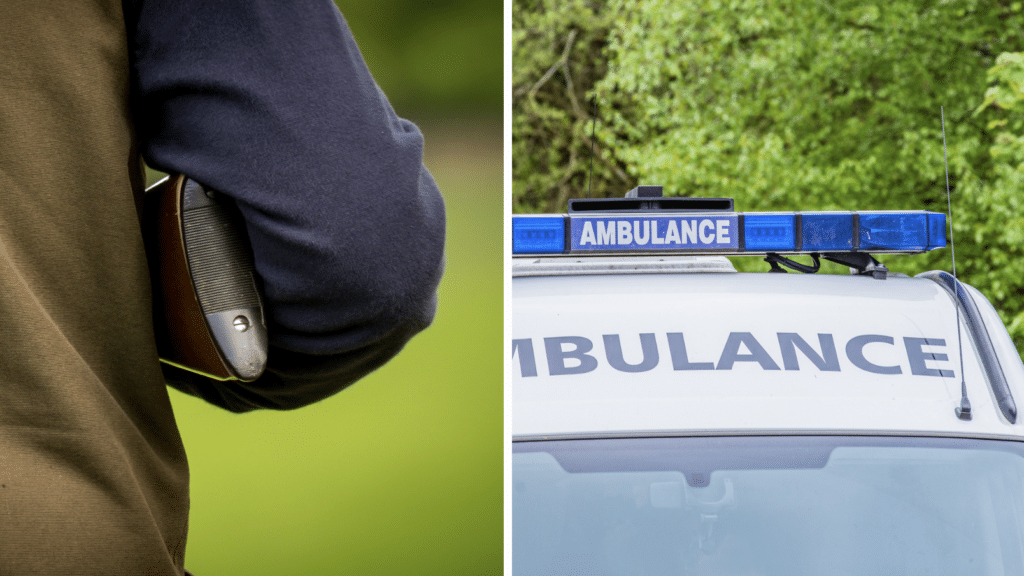On 31 August an eleven-year-old boy was shot in a woodland in East Sussex. His life-changing injuries are a stark reminder of how dangerous the shooting industry can be.
Sky News reported that:
“During the incident, the boy suffered a serious, potentially life-changing wound to his hip and was airlifted to hospital in London, according to police.”
The incident happened during a rough shoot, which the boy attended with a group of adults. A 54-year-old man was arrested, suspected of grievous bodily harm.
What is rough shooting?
Rough shooting is the most common way to shoot birds, such as grouse, or mammals, such as rabbits, in the UK. According to the British Association for Shooting and Conservation:
“This is a most common method of live quarry shooting. Shooters use their trained dogs to flush game out of the hedgerows, woods or other cover as they walk along.”
It’s unclear what species the party was trying to kill. A local person told The Standard:
“It’s rural Sussex, people shoot for fun, usually at organised shoots, either clay, duck or pheasant but the season for those hasn’t quite started yet.
Some people shoot rabbits in private land if it’s a pest problem in the area.”
Shooting is dangerous for humans, too
At risk of stating the obvious, shooting mammals and birds is dangerous for humans. Accidents happen, and people get caught in the crossfire. Grouse shooting in particular is the most risky. The Field reported one decade ago that:
“The number of grouse shooting accidents on grouse moors has increased significantly in recent years…
There have always been grouse shooting accidents on grouse moors. Because of the height that grouse fly at and the way they approach the butts, grouse-shooting is inherently more dangerous than any other form of driven-game-shooting.”
Ten years later, accidents are, of course, still happening. According to the shooting magazine, the flanker – that is, the person with flags on the end of the beating line – is the most vulnerable person on the moor, and can be accidentally targeted by inexperienced shooters.
Back in 2012, the BBC reported that two men were injured while ‘game’ shooting in North Yorkshire. It said:
“A 46-year-old man was struck in the face by pellets during a pheasant shoot in Strensall, near York, on Saturday.
The next day a 46-year-old man from Rotherham, South Yorkshire, was hit in the leg on farmland near Selby. Both men suffered only minor injuries.”
And in 2017, the BBC reported on more injuries during a pheasant shoot on the Carnanton Estate in Cornwall. The news site said:
“One man was shot through the eye and two others seriously injured during a pheasant shoot.”
Stu Young, the son of the man shot in the eye, was interviewed at the time, and said:
“The pellet is right next to his brain but the surgeons decided it would be safer to leave it in rather than risk damage to the brain.”
End shooting in the UK
Grouse shooting season began on 12 August, and during the season the industry will aim to sell hundreds of thousands of red grouse to shooters to kill. Between 300,000 and 500,000 grouse are likely to be murdered. On top of this, wild animals such as foxes are being killed in snares and traps, set by gamekeepers, to ensure that the grouse are a live commodity for shooters. Meanwhile, raptor persecution (the illegal persecution of birds of prey) is rife, as gamekeepers poison birds, also to protect their commodities to be shot.
Protect the Wild is campaigning to end shooting in the UK. We argue that:
“It’s worth a great deal of money, owns a lot of land, and has wealthy and influential supporters. It is also utterly selfish, responsible for the deaths of millions of birds, and of trapping and snaring hundreds of thousands of mammals. So while saying ‘we will end it’ is a brave claim to make, for the sake of so much animal life it has to be done.”
The fact that humans also get injured is yet another reason why this disgraceful industry should be shut down for good. Together we can make it happen.

